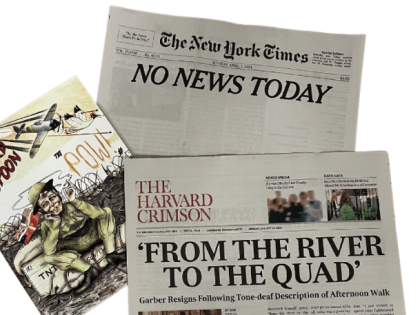 |
| Illustration by Rick Stromoski |
Librarians tell of a great diversity of items used as bookmarks by library patrons and later discovered in returned books. Train, plane, and bus schedules are common. Touristy photographs abound. Paper money is not a rare find, and there's the occasional payable check. Norma Jessop, special collections librarian at University College Dublin, told an e-mail discussion group recently that among her discoveries are a rusty five-centimeter pin; two lottery tickets for the Missionary Sisters of St. Columban; instructions for unstringing a bow; regulations for members of the Woodenbridge Golf Club, County Wicklow; two tickets for a concert in Cologne Cathedral; holy cards (various); a circular aimed to get out the vote for the post of building inspector; and a card with a pink rose and the message "I wish you a happy day, darling."
A librarian who worked at Columbia in the late 1960s recounted "rumors that a book had been turned in to the main circulation desk at Butler Library with a fried egg (presumably a very dry, crispy one) in it as a bookmark." A British librarian recalled a rasher of bacon used as a bookmark in a volume returned to her public library in Enfield, Middlesex.
Eleven Harvard librarians, responding to a survey conducted for this magazine, reported finding as bookmarks a sewing needle, personal letters, feathers, playing cards, an invitation to the ordination of a priest, yarn, a used condom, parking tickets, popsicle sticks, combs, and an arrest warrant. They told also of items never intended as bookmarks but resident in books nonetheless, such as sweet-pea blossoms, a squashed spider, and cuttings left over from quill sharpening.
Many leave-behinds have unhappy consequences. "When I was a conservation student," a Harvard conservator testified, "a co-worker in the lab discovered a piece of cake in a reference book. It was definitely red-pink and white, leading us to a long discussion of its nature. Some thought it to be a slice of birthday cake, commercially made. Others, myself included, thought it looked more like a Hostess Snowball of the pink variety. The thought of launching a scientific study of the spread rate of oil through paper was entertained, but we had no way of knowing how long the offending confection had been in place."
Librarians live in an anarchic world. No wonder the leaders of the Harvard College Library want to stamp out idiosyncracy, among their own at least. They have distributed to staff a loose-leaf notebook full of rules for creating printed materials. "A cohesive, consistent delivery of the graphic identity reinforces the message that Harvard College Library is a strong, distinguished, enduring, focused organization that is rooted in tradition but contemporary in approach," it says. "Following these standards in all communications will ensure the presentation of a clear, consistent, positive vision of the Harvard College Library and its units to students, faculty, alumni, and to the community at large." The manual specifies such matters as the distance that must separate the shield of the library from other elements on the page, the exact paragraph of words to be used by each library in the system when describing itself, and the color palette to be employed (crimson, gray, blue, green, tomato). "The HCL color palette, which is rich, distinguished, and traditional with a contemporary edge, reflects the Library's nature."
What's a librarian to do but embrace conformity in a culture where fried eggs and bacon may crop up at any time?
At 8:45 a.m. on February 20 a Wiccan priestess led the daily service of morning prayers in Memorial Church. Grove Harris, M.Div. '96, is otherwise administrative assistant of the Pluralism Project at Harvard, started in 1991 by Professor Diana Eck to study the growing religious diversity of the United States. Harris spoke at the 1999 Parliament of the World's Religions in South Africa, delivering an address entitled "Witches in the United States and South Africa: A Nuanced Comparison." "Chapel has long afforded, since 1886 at least, a pulpit to non-Christians," says the Reverend Professor Peter J. Gomes, Pusey minister in the Memorial Church. Harris is "the first Wiccan priestess of whom we are aware."
~Primus V







